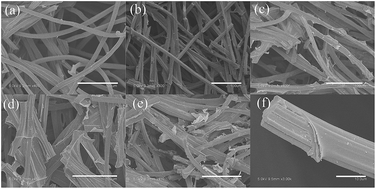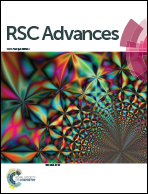N-Doped ordered mesoporous carbon grafted onto activated carbon fibre composites with enhanced activity for the electro-Fenton degradation of Brilliant Red X3B dye
Abstract
Nitrogen-doped ordered mesoporous carbon (N-OMC) was successfully prepared using dicyandiamide (C2H4N4) as the nitrogen source and was grafted onto activated carbon fibres (ACFs) to form carbon composites (ACF@N-OMC). The resultant ACF@N-OMC materials were used as a cathode for the electro-Fenton degradation of organic pollutants using Brilliant Red X3B as a molecular probe. Our prepared ACF@N-OMC materials showed a higher electrocatalytic activity than nitrogen-free carbon materials. The doped nitrogen ACF@N-OMC cathode materials reduced the overpotential of O2 reduction in the cathode. In addition, the introduction of nitrogen into the ACF@N-OMC materials resulted in a larger pore size, which was beneficial for O2 diffusion, producing more reactive species. The electrocatalytic activity of the ACF@N-OMC cathode materials depends on the nitrogen content. With an increase in the nitrogen content, the activity first increased and then decreased. The ACF@N-OMC materials were stable and could be reused at least six times in the electro-Fenton degradation of Brilliant Red X3B without a significant loss of activity.


 Please wait while we load your content...
Please wait while we load your content...